Second graders. Their baby fat is starting to burn off. They are becoming more interested in social interaction. Hopefully they are on their way to reading on their own for pleasure. Their attention span might be longer than their younger counterparts, but don’t feel the need to follow a school-at-home approach.
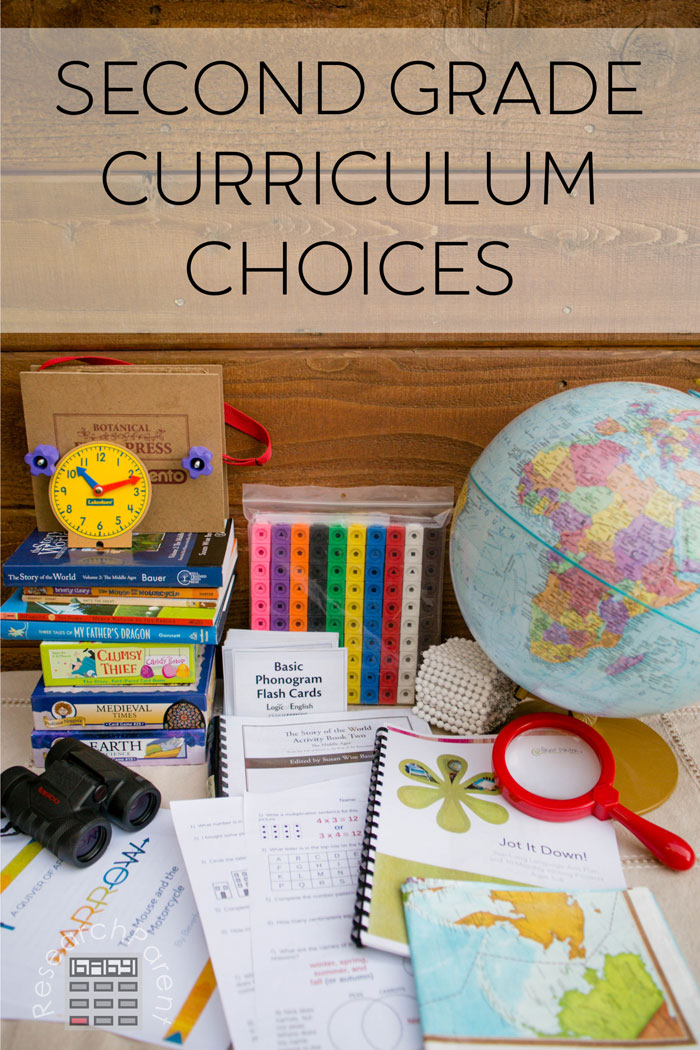
A lot can be accomplished in a short amount of time. This leaves plenty of room in their lives for playing outside, expending physical energy, and following their passions. Even as my kids get older, I like to keep the time we spend “schooling” each day to under 2 hours. Here are some of my main recommendations for second grade based on what our family has done in the past.
Language Arts
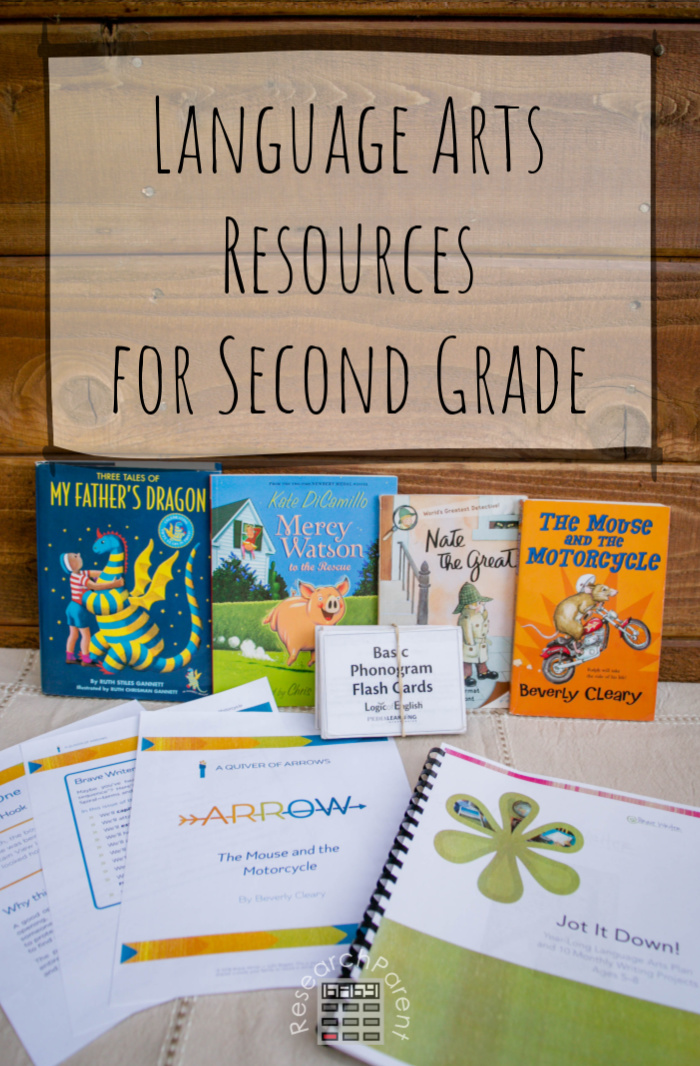
Ideally, by second grade your child will be well on their way to becoming a reader. I make sure to give my kids plenty of time to read for pleasure. My kids are allowed tostay up as late as they want after bedtime as long as they are reading. It helps to get them hooked on a book series to increase the chance that reading will become a habit.
I also encourage my kids to write as much as possible. Sometimes I write them notes and encourage them to do the same. I act like I’m busy and ask them to write lists for me or leave notes for their dad. Most importantly, I NEVER criticize their spelling. If they ask me to spell something, I will only if they insist. First, I encourage them to just sound it out. I tell them that if I can read it, that’s good enough for me.
I do have some tools and strategies for making sure my kids become better spellers and learn grammar skills. However, at this age, none of it involves critiquing their original writing. I want them to feel confident and unafraid when it comes to putting their ideas on paper.
Here are some of my recommended language arts resources for second grade.
- As I mentioned, enjoyable books are my primary language arts resource. Here is my researched list of the best books for early elementary and mid elementary. Be sure to read aloud to your child in addition to encouraging them to read on their own. Remember they are able understand and discuss books far above their reading level.
- Our family uses Bravewriter Arrows for copywork in order to teach the mechanics of writing. Note that you don’t NEED a purchased product to incorporate the copywork method into your homeschool. You can pull arbitrary sentences from your current read-aloud. However, the Arrows are handy if you an afford them. They provide well thought out lessons to go with the chosen passages including topics like figurative language.
- I also use the “find the mistakes” method of teaching things like punctuation, capitalization, and spelling. To start, I take our copywork passage from the week, type it out and then make mistakes on it. I print out a different version for each of my children making more mistakes for older kids. For a second grade child, I will un-capitalize the first letter of the sentence and remove some ending punctuation and quotation marks. I will also sometimes misspell simple words (like sez for says or thay for they). Occasionally, I take out apostrophes for some possessive words and contractions. The child will already be familiar with the passage from having copied it. I will have pointed out these grammar elements and had them notice spellings earlier in the week. This “talk about, copy, then fix mistakes” method allows me to teach my kids grammar and spelling without ever having to criticize their own writing.
- To help my kids with spelling and reading, we also use these phonogram flashcards from Logic of English. When they are younger, we use the corresponding Doodling Dragon book series to teach the same concepts. I don’t think learning the phonograms is necessary, but it makes teaching spelling in particular easier. For example, if my child asks me how to spell fight, I can just say, “Use three letter ‘i.'” They will know to use ‘igh’ and be more likely to remember it for next time.
- I do not have my child do anywhere close to every activity in this workbook, but we also use Evan Moor’s Building Spelling Skills: Grade 2. Mainly, I just try to make sure my kids know how to spell the words on the lists. I like using a simplified version of the method I learned from Logic of English to teach spelling. First, I say the word broken apart into syllables to make double letters easy. While doing this, I “say to spell,” which means that I pronounce the word in a way that will make it easier for a child to remember. For example, ‘letter’ would be ‘let’ – ‘ter,’ emphasizing the syllables and the ‘t,’ not ‘d,’ sound. I also use clues based on the phonogram cards. For ‘letter,’ I would say, “use the ‘er’ as in ‘her.'” (Note that there is also an “ur as in hurt,” an “ir as in bird”, and an “ear as in search.” The English language is complicated!)
- Since I want my children to learn cursive, we have used this Handwriting Without Tears: Cursive Kickoff book in second grade, but honestly, I have not been as rigorous about follow through as I would like.
- In order to get my kids writing creatively, we do something called Friday Freewrites. I set a timer for 10 minute and have my kids write on any topic they choose. They sounding out words they don’t know how to spell. In second grade, usually not much goes on the page during this 10 minutes, but I just want them to get used to the practice.
Math
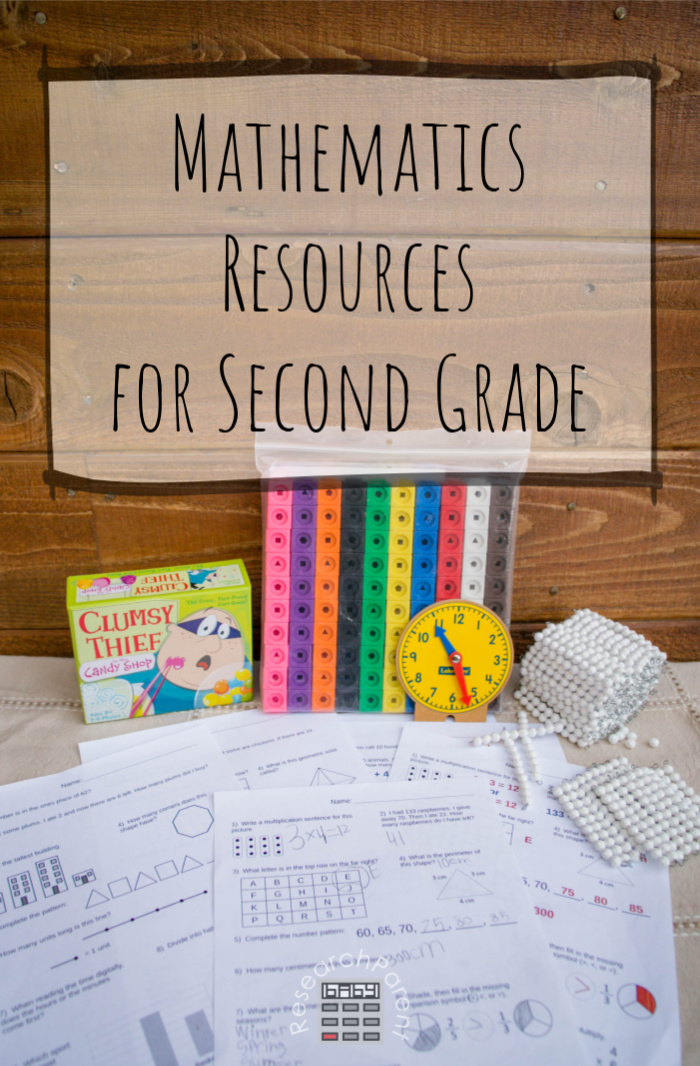
None of my kids, at least through fifth grade, spend anywhere near as much time on math as other children their age. However, I spend more time planning and prepping math than any other subject. Personally, I love math and I want my kids to love it too. I do not want them to ever think of math as tedious or boring. Therefore, I hand chose 10 problems for my child to do each week based on researching a number of different curriculum. Those 10 problems are the only math they are required to do throughout the week.
However, I also try to incorporate a number of other math resources to get them thinking critically and practicing math skills in a more enjoyable way. Here are some of the math resources that I have used with my kids in second grade.
- My second grade minimalist math curriculum is the foundation of our math for the year. This free printable includes 10 problems for each of the 36 weeks of school. The problems cover a wide variety of topics and get progressively difficult throughout the year. I frequently provide a lot of support when my children complete their math to prevent frustration.
- Montessori-style manipulatives are great for teaching kids place value. Here is a set on Amazon and here is the DIY set that I made several years ago and still use with my kids. I love all of Montessori’s hands on learning material. You can find more free Montessori math material that I created here.
- Interlocking cubes are really helpful when you are teaching kids to carry and borrow (now called regrouping).
- A teaching clock is very helpful in teaching your child to tell time.
- Kumon Geometry and Measurement Grade 2 is a thin workbook that provides worksheets with a very thorough and concise overview of what a second grader should know. Occasionally in the past I have supplemented my homemade curriculum with this workbook. However, we have never completed all the problems.
- To practice subtracting numbers less than 20, we have used Subtraction Facts that Stick by Kate Snow. This includes both games and worksheets. I typically plan to have my kids do one worksheet each week for practice. However, we usually drop this by about Christmas. The games are such a great way to get the kids exciting about practicing math.
- For a fun way to practice adding to 20, try the game Clumsy Thief in the Candy Shop.
- In second grade, I like to continue using this Mind Benders book that I started using in first grade. Logic puzzles are so fun and help kids think critically. If you’ve already finished this book, check out the Lollipop Logic or Logic Safari series instead. Of you could move on to the next Mind Benders book. Please note that in order for you child to learn to find these enjoyable, they may need considerable assistance in the beginning until they get the hang of them.
Science
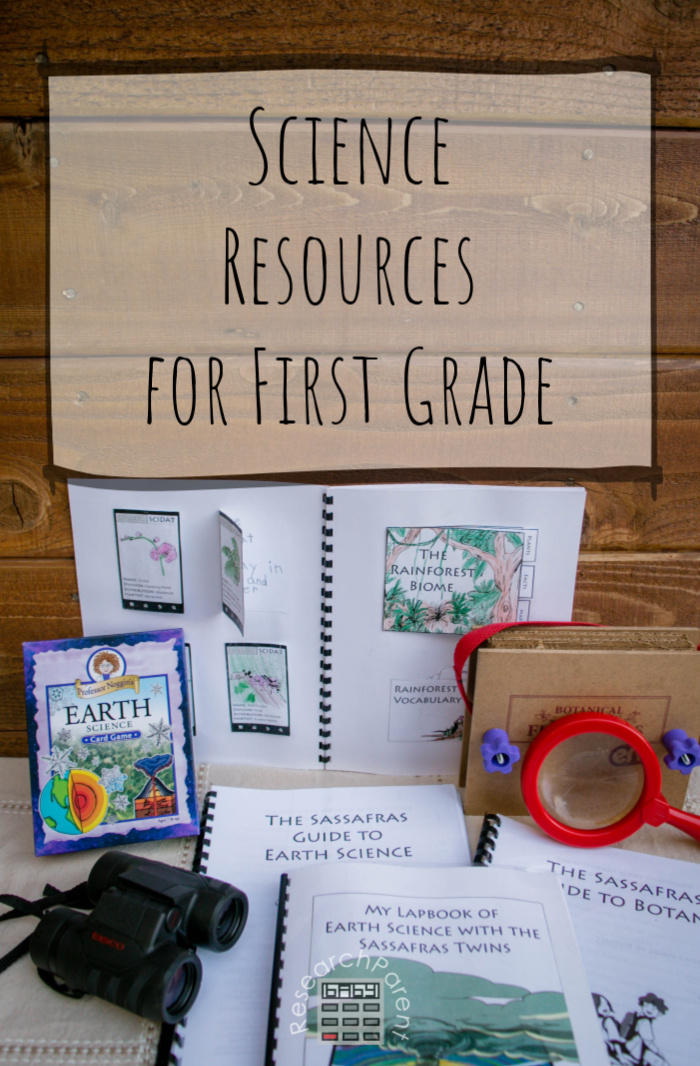
In my opinion, if you have more than one child homeschooling, all your kids should be learning the same ares of science and history. This makes like SO much easier. Therefore, if you have a curriculum you are planning to use with your oldest child, just adapt that curriculum to be appropriate for your younger kids.
If your oldest homeschooling child is in second grade, here are my recommendations based on what our family has used.
- My kids adore Sassafras Science, a Charlotte Mason style living book curriculum revolving around the adventures of 12 year old twins named Blaine and Tracy. Their second year curriculum is Botany and Earth Science, but if you haven’t already used them, you might want to start with the first two volumes. It isn’t critical that you read the books in order, but since it is a story, it does make things slightly less confusing. Personally, I choose to use the lapbook option instead of the Scidat logbook as it involves less writing and makes a nice finished product. You will still need the teachers guide in addition to the living books.
- Sassafras is a complete curriculum including experiments and scientific demonstrations. However, if you would either like to supplement or would like a choice that doesn’t require such a time investment in reading, I also love Pandia Press’s REAL Science Odyssey curriculum. Their recommended curricula in second grade is Earth and Space, but any of their Level One curricula would be appropriate for a second grader.
- To make science as hands-on as possible, I recommend investing in a pair of binoculars and a magnifying glass. If you are studying botany, a plant press is also nice to have.
- Prof. Noggins card games are a great way to reinforce science and history. Our family likes to play these games over dinner. There are games on a wide variety of topics, such as Prof. Noggin’s Earth Science Card Game.
Social Science
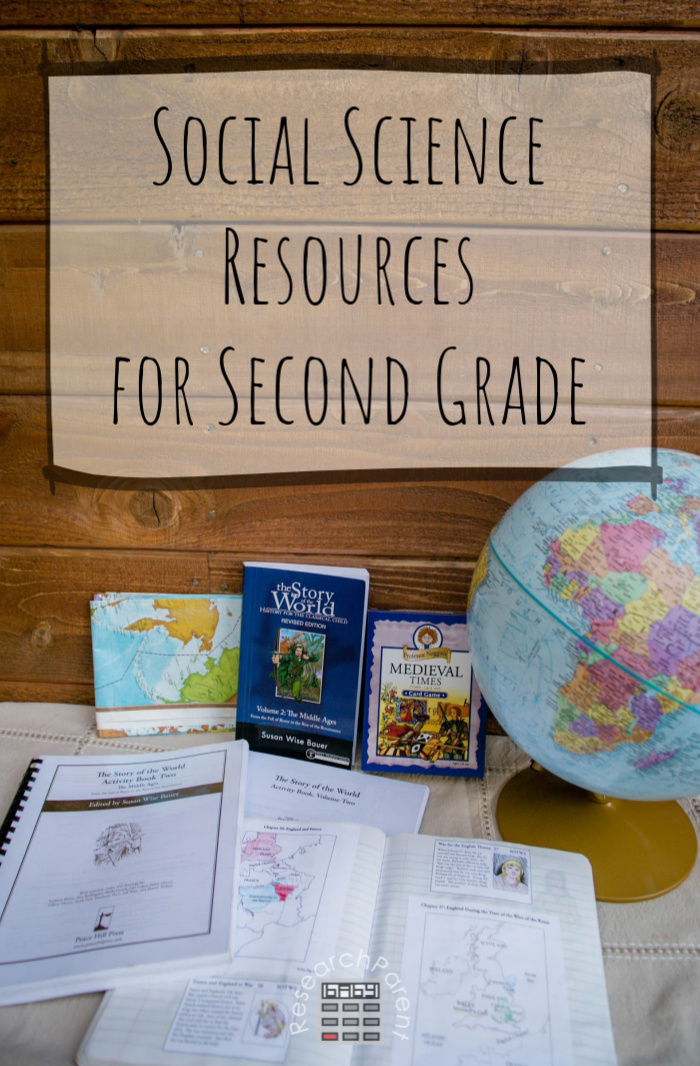
So far, our family has only used Story of the World for history, which I am very satisfied with. However, we will be trying a different curricula from Pandia Press next year for variety. There are four main areas of history: Ancients, Middle Ages, Early Modern, and Modern. If you have an older child, as I mentioned before, it’s best to have the whole family learning about the same time period at the same time.
If your oldest is in second grade, just study whatever time period comes next in the sequence for them. Here are some resources I recommend for social studies in second grade.
- If you are planning to use Story of the World, choose whichever one makes the most sense for your family. For us, that was Story of the World Volume 2: The Middle Ages.
- If you use Story of the World, you will also want the Activity Guide that goes with it. For us, that was Activity Book 2: The Middle Ages. It has a wealth of information including chapter summaries, geography, additional reading for a variety of age levels and hands on activities. There are FAR more ideas in this guide than you could ever possibly do with your child. The only thing I was fairly consistent about doing with my kids in second grade was the map work.
- If you think you will be listening to your history in the car, then I highly recommend the audiobook version. It is narrated by Jim Weiss who is a fantastic storyteller. Personally, we don’t drive very much. Rather than try to listen to an audiobook in the house, I prefer to read-aloud. I like to read the chapter to my kids over breakfast or lunch so I know they are listening and we can talk about it after.
- I choose not to give my kids tests at this age, but be aware that there is also a Story of the World Test and Answer Key for each volume of the series. Even if you choose not to give them tests, it could be useful for summarizing what happened in each chapter. I have a friend who would go over the tests together with her kids as a family at the end of each chapter.
- If you are studying the Middle Ages, I recommend Prof. Noggin’s Medieval Times Card Game. Once or twice a week as we eat a meal, we take turns rolling the dice, and then I read the questions. If the person answers the questions correctly, they get to keep the card. Whoever earned the most cards at the end is the “winner.” This is a fun way to supplement what we are learning.
I hope some of that information was helpful to you! There are so many fantastic options on the market, you pretty much can’t go wrong. Even if you chose to do basically nothing structured at this age, you can’t keep your kids from learning. Have a wonderful second grade year!
Related Links
Homeschooling Articles
Favorite Homeschool Resources
Learning Activities for Kids
The post Second Grade Curriculum Choices appeared first on ResearchParent.com.
